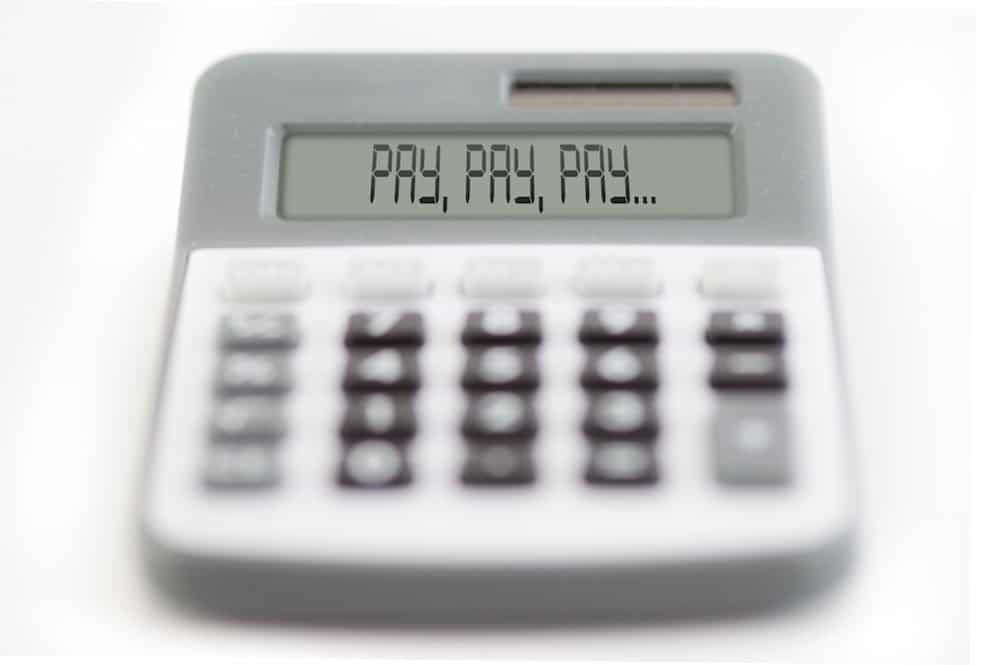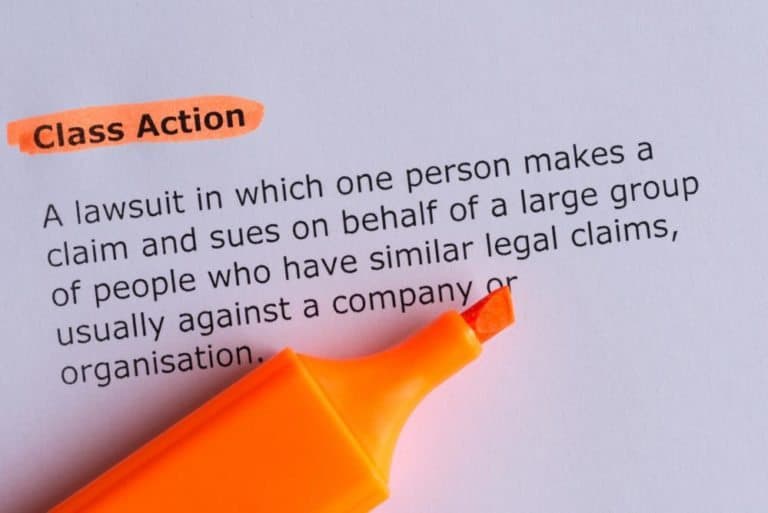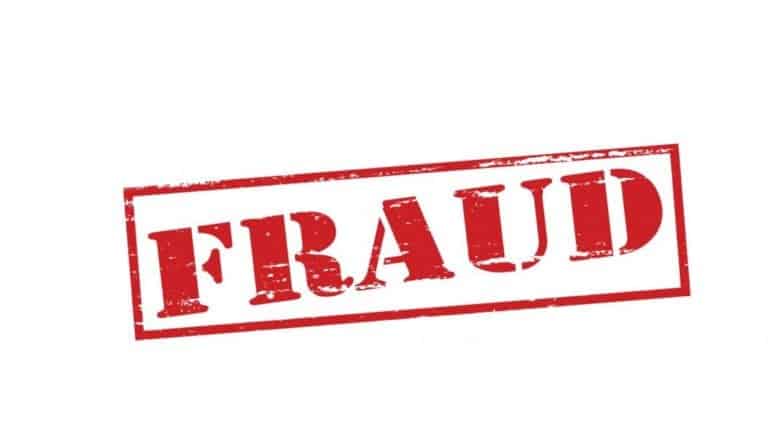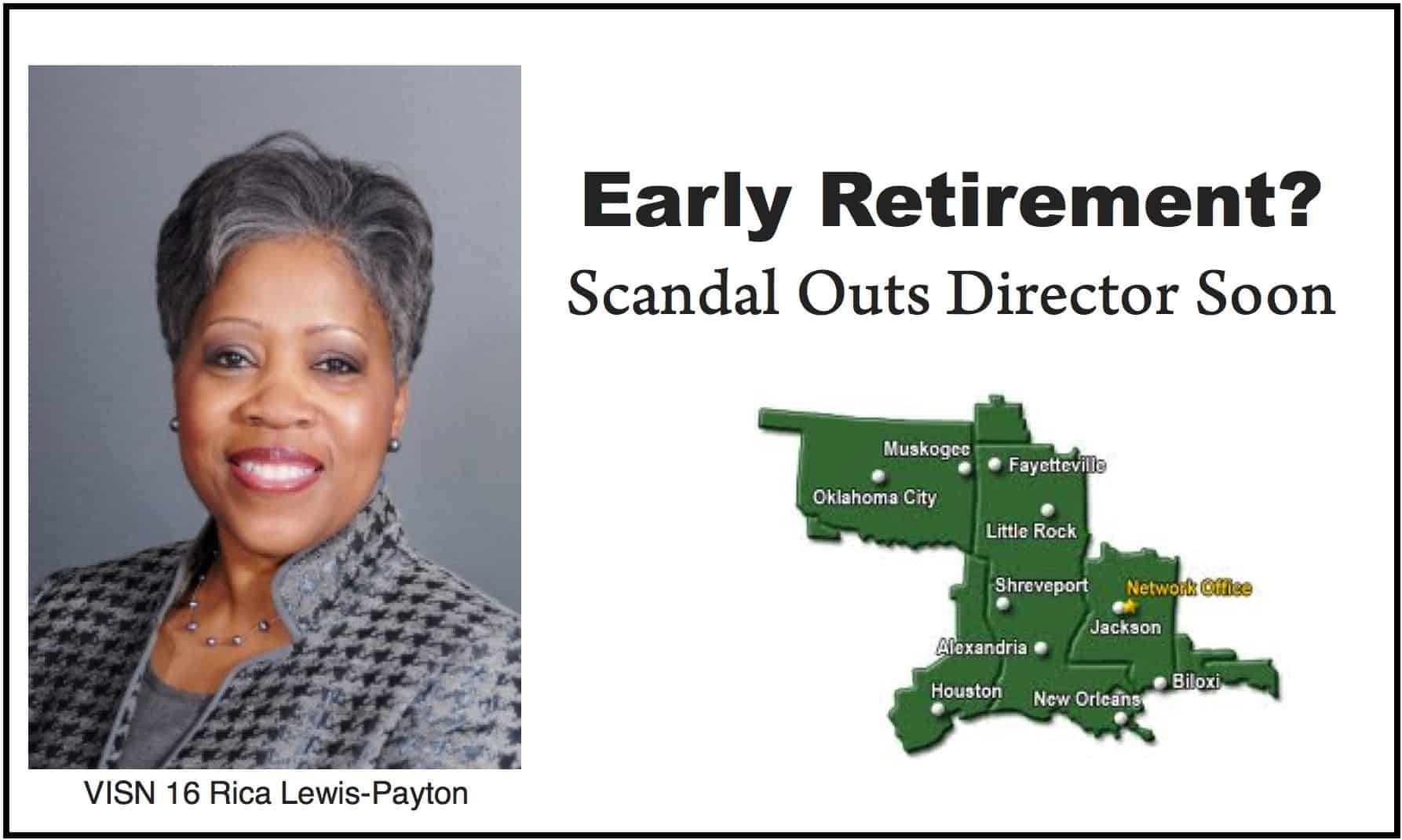FY2022: Veteran Readiness and Employment Subsistence Rate Increase (with Inflation Update)
There is good news for many veterans during Fiscal Year (FY) 2022. VA provided a significant increase in the monthly subsistence payments for veterans in the Veteran Readiness and Employment (formerly Vocational Rehabilitation and Employment) program.
That is the good news.
The there is also some no-so-good news.
You may recall in lat 2021 many talking heads and pundits on cable news stations towed the party line to not worry about inflation – – many of whom carried the water for the big lie that inflation was “transitory.”
RELATED: What ‘Transitory’ Inflation Really Means
As of this writing, not only has Federal Reserve Chairman Jerome Powell largely ditched the talk of transitory inflation, but it appears inflation has spiraled out of control.
The White House just issued an astonishing increase in the rate of inflation of 8.5%, which is the highest year over year increase since 1981.
“The American consumer is really feeling it and it’s going really from bad to worse,” said the Job Creators Network’s Alfredo Ortiz to The National Desk’s Eugene Ramirez. “When you look at food prices at the grocery store well over 10% across the board. We’re talking eggs, bread, milk, cheese, I mean, this is really hurting the American consumer. Rents alone are going up over 35%. Where does it stop?”
Okay.
So the good news is the federal government did increase our subsistence pay in many areas.
The bad news is the federal government, through its policies and spending, created an inflationary spiral that outstripped the subsistence increase for practically everyone. Instead, you are actually receiving less when your purchasing power is factored into the equation.
(Hint: the program’s name change is still pending APA changes to the regulations. It is referred to frequently as VA Voc Rehab, Chapter 31, VR&E, and Vocational Rehabilitation.)
Inflation vs Your Benefits
There are many theories about what is happening right now with our economy.
We could debate on whether this is Russia’s fault, the fault of the Federal Reserve, the fault of greedy homeowners demanding premiums on their homes, or the fault of bad White House policies over the past two decades leading up to now.
Whether it is any one party’s fault is really a red hearing (an argument serving to distract rather than address the core issue). Most likely, the cause of the current inflationary cycle is a combination of factors and policy decisions leading up to now over the past many years.
(I plan to write separately to explain what is happing and what to expect.)
For the purposes of this article, just know that inflation serves, in function, as a tax on your benefits. As inflation grows, your purchasing power become less. On the flip side, fixed price loans issued prior to significant increases in inflation will effectively cost less. In real terms, the amount the federal government needs to pay lenders for the recent bailouts, social security payments, veterans benefits, and other obligations, costs less whenever inflation outstrips the payment amount made.
Some of you may recall, last year, the Federal Reserve referred to inflation as “transitory,” which was total nonsense but parroted by talking heads at news networks and legacy media reporters. The White House even went as far as to say inflation was a good thing, but this is just not true.
Over the past three years, gas has nearly doubled, cost of feed for livestock has doubled in some instances, cost of fertilizer has increased 10 fold per acre ($200 to $2000), cost of food and housing has increased by up to 30 percent or more depending on what you are looking at, and utilities are also increase significantly.
By the time the federal government gets around to another increase in benefits payments, our payments at current dollar amounts will be worth significantly less.
For our purposes, we simply need to know how inflation will affect our benefits and plan accordingly. I do not think we are anywhere near “top inflation”.
Enough of the doom and gloom.
Here is what you need to know about the subsistence pay and how it all works.
If you only came here to see the rates, skip to the table below. If you came here to learn more about the difference in the rates, how to know which rate to pick, and more about the resources of this website, keep reading.
What This Website Is All About
Many veterans reading this page probably have no idea why this website exists or what it’s for, so give me 30 seconds for our elevator talk.
I created the DisabledVeterans.org universe to help educate veterans about their benefits. More importantly, the site serves as a platform to give a voice to those of us who struggle with agency politics and personnel when getting the benefits we were promised.
RELATED: Veteran Readiness Scandal Exposed By CBS
There was nothing like this online at the time – circa 2009 – an education and news website with a robust social media presence, (see our Facebook Group) helping educate disenfranchised disabled veterans about VR&E and other benefits.
I am an investigative journalist turned veteran rights attorney
Yes, VA did pay for my education including law degree.
Yes, I did fight VA for over a decade for all benefits including increasing my disability rating from 10 percent to 100 percent. The backpay I won allowed me to buy this website and build out the content on it.
As a lawyer (see www.benjaminkrauselaw.com), I help veterans who were denied VR&E benefits, Disability Compensation, injured by VA clinicians, and with Freedom of Information Act and Privacy Act requests for their records and other things.
As an investigative journalist, I report on issues veterans bring to my attention and general news topics affecting veterans’ receipt of benefits including health care. Over the past decade, we’ve exposed major scandals affecting non-VA emergency reimbursement, use of unqualified doctors to evaluate veterans with TBI, the ridiculous VA “Crow Flies” rule for Community Care, and VR&E’s erratic adjudication of veterans’ benefits (my first scandal, covered by CBS Evening News with Katie Couric.
About VR&E, I later created an online VR&E course and ebook called Voc Rehab Survival Guide.
Proceeds from sales keeps this website online. Software tools and research resources ain’t cheap much less free. Future sales will help pay for reporters and other resources veterans’ desperately need to avoid agency screw jobs like compensation reduction actions and other lowballing efforts.
I understand what’s affecting disabled veterans like you because I am a disabled veteran like you.
Many Veterans Unaware Of Veteran Readiness and Employment Perks
Many veterans using the GI Bill may be unaware they are qualified for thousands more in benefits through Veteran Readiness and Employment much less the option to use VR&E, receive the higher GI Bill BAH subsistence payment amount, while also saving back their GI Bill for later use.
What is not to love about this new system rolled out April 2021?
Chapter 31 VR&E program participants may be eligible for subsistence payments at dramatically different rates based on remaining GI Bill entitlement and location.
Veteran Readiness Name Change from Vocational Rehabilitation and Employment
The pubic name change came in the summer of 2020 as a result of human-centered design research. Using new technologies, agency leadership learned veterans were frequently confused by the terms “vocational” and “rehabilitation” when it came to understanding the program. So, they changed the name of the program to Veteran Readiness and Employment.
(In true VA fashion, the agency failed to change the name legally and is presently working through APA notice and comment requirements to properly change the nearly two years later.)
Post 9/11 GI Bill BAH Rate Increase
Starting January 1, 2022, the Basic Allowance for Housing (BAH) rates increased an average of 5.1 percent – this will help veterans using VR&E who are also entitled to the GI Bill. This increase was reported as the largest increase in many years. Last year’s average increase was 2.9 percent.
The 5.1 percent increase is an average for all areas, but the actual rates are dependent on individual locations. The rates locally are set on local rental housing market. Not all locations will see an increase from the previous year. Some may even go down.
Veterans using Chapter 31 VR&E who lack GI Bill eligibility to qualify for the BAH subsistence rates generally receive lower subsistence rate payments unless they have higher numbers of dependents.
Traditional VR&E Subsistence Rate Increase
The standard VR&E subsistence rate increased by 2.67 percent based on the Consumer Price Index increase. This increase is many times lower than the inflationary rate that has not yet hit its peak.
Under the traditional Chapter 31 VR&E rates, a veteran without dependents may receive a subsistence rate of $670.77. Meanwhile, a veteran with at least two dependents is eligible to receive $980.49. Beyond two dependents, a veteran may receive $71.45 per additional dependent. The maximum a veteran can receive is $2.838.19. This would mean you have up to 25 dependents.
The GI Bill is a fantastic benefit where many veterans receive a subsistence payment plus coverage for tuition at a state university for up to 36 months.
Yes, that is fantastic. But is it the whole story?
It is for veterans without qualifying disability ratings where the disability results in a vocational impairment the effect of which has not been overcome.
The Chapter 31 VR&E vs GI Bill Myth
Veterans with disability ratings of 10 percent or higher may consider using Chapter 31 VR&E based on a little secret about that program that some Veteran Service Organizations (VSOs) fail to understand.
Some well intended but misinformed VSOs keep telling disabled veterans that the GI Bill is the only way to go while leaving out one key detail.
<< Disabled veterans with an Employment Handicap or Serious Employment Handicap may be approved for training in professional careers where the training lasts longer than 36 months in total. >>
What does that mean and why does it matter?
Employment Handicap and Serious Employment Handicap
The concept of an Employment Handicap can get rather involved, so here is a shortened explanation of what this means.
Generally, a veteran with a service-connected disability that causes a vocational impairment the effects of which have not been overcome through training or other criteria will be deemed to have an Employment Handicap. The program will then evaluate the veteran for a potential Serious Employment Handicap (SEH).
Veterans deemed to also have an SEH may be eligible for additional training beyond what is considered necessary. Such a finding may also waive certain limitations to the total number of months of education the veteran may receive as well as time constraints to use the benefit.
Why does this matter?
Money Left on the Table: Higher E-5 BAH Of GI Bill vs Standard VR&E Monthly Pay
For disabled veterans entitled to Chapter 31 VR&E benefits, these veterans may receive well over 36 months of benefits including subsistence payments. This is especially the case for some veterans with an SEH.
Veterans with remaining entitlement to the GI Bill may then opt in for the higher subsistence payments at E-5 rates equal to those of the GI Bill while also getting all tuition and expenses paid for well over 36 months.
You know how much that can add up to for some veterans in their undergrad who want to become doctors or lawyers after they graduate?
A lot of money.
For example, a veteran approved for a rehabilitation plan that includes completion of both an undergraduate degree and graduate degree may also receive the higher BAH subsistence amount for the entire duration of training for up to 48 months or more.
Two examples of this would be a veteran who is approved to become a physician or lawyer.
San Francisco veterans who follow the advice of the VSO may be leaving $48,000 on the table in subsistence payments each year beyond 36 months if the veteran takes the bad advice.
Instead of receiving nearly $5,000 per month, VR&E would instead pay only $832.03 per month.
Is this a good deal?
It is if you saved back some GI Bill entitlement prior to applying for benefits from Chapter 31, VR&E.
Here is the agency’s breakdown of the subsistence increase.
VA Policy Document On Subsistence Rate FY 2022
On October 1, 2021, an increase to traditional Chapter 31 subsistence allowance rates went into effect.
The remainder of this post highlights the following:
- The new Chapter 31 rates and the first increased payment date
- Processing subsistence allowance in Corporate WINRS Subsistence Allowance Module (SAM)
- How running Chapter 31 awards will be adjusted
- How Veterans will be notified about the Chapter 31 increase
- Election of alternate subsistence allowance under Public Law (PL) 111-377
- Who to contact with Chapter 31 subsistence allowance questions
1. The New Chapter 31 Rates And The First Increased Payment Date
The enclosed table reflects the new traditional Chapter 31 VR&E subsistence allowance rates that are effective October 1, 2021 through September 30, 2022. Since the Department of Veterans Affairs (VA) pays subsistence allowance for training that has been completed in the previous month, the first payment at these rates were reflected in the November 1, 2021 subsistence allowance.
RELATED: Voc Rehab Survival Guide (Ben’s ecourse on winning Chapter 31 VR&E benefits)
| Type of Training | Training Time | No Dependents | One Dependent | Two Dependents | Each Additional Dependent |
| Institutional; Nonpay or nominal pay work experience in a facility of a Federal, State, local, or federally recognized Indian tribe agency; Improvement of Rehabilitation Potential: | Full-Time | $670.77 | $832.03 | $980.49 | $71.45 |
| – | ¾ Time | $504.01 | $624.93 | $733.06 | $54.97 |
| – | ½ Time | $337.23 | $417.83 | $491.14 | $36.66 |
| – | ¼ Time1 | $168.59 | $208.95 | $245.57 | $18.29 |
| Nonpay or nominal pay on-job training in a facility of a Federal, State, local, or federally recognized Indian tribe agency; Training in the home; Vocational course in a rehabilitation facility or sheltered workshop; Independent instructor: | Full-Time Only | $670.77 | $832.03 | $980.49 | $71.45 |
| Farm Cooperative, Apprenticeship or other On-Job Training2: | Full-Time Only | $586.46 | $709.22 | $817.36 | $53.15 |
| Combination of Institutional and On-Job Training (Institutional Greater than One Half);Non-farm Cooperative Institutional Training and Non-farm Cooperative On-Job Training (FT Non-Farm Coop/Institutional): | Full-Time Only | $670.77 | $832.03 | $980.49 | $71.45 |
| Combination of Institutional and On-Job Training (On-the-Job Greater than ½); Non-farm Cooperative Institutional Training and Non-farm Cooperative On-Job Training (FT Non-Farm Coop/On-the-Job): | Full-Time Only | $586.46 | $709.22 | $817.36 | $53.15 |
.
1. The quarter-time rate may be paid only during Extended Evaluation.
2. For On-Job Training, training wage plus subsistence allowance cannot exceed the journeyman wage.
3. This maximum rate was calculated based upon full-time enrollment for a Veteran with the following dependents: spouse,
mother, father and 25 children.
2. Processing subsistence allowance in Corporate WINRS (SAM)
Traditional Chapter 31 subsistence allowance rate awards already entered into SAM have been automatically adjusted with the COLA rate effective October 1, 2020. New award entries will display the COLA adjustment effective October 1, 2020.
Post 9/11 subsistence allowance rate awards require no additional action in SAM at this time. The revised rate for P911SA rates will be available later this year.
3. How running Chapter 31 awards will be adjusted
In early October 2021, a batch computer program should have identified and automatically retroactively adjusted awards that include an effective date of October 1, 2021, or earlier.
The automatic adjustment to Chapter 31 awards will:
- Generate online notice of exception messages for cases that could not be adjusted by the batch process and that require regional office action to manually adjust the subsistence rate.
- Generate a report of all SAM adjusted and non-adjusted cases in early October 2021.
- Generate award letters to Veterans notifying them of the change in their subsistence rate(s) effective on or after October 1, 2021.
4. How Veterans Will Be Notified About The Chapter 31 COLA Increase
All Veterans receiving the traditional Chapter 31 VR&E subsistence rate at the end of September 2021 should have received notification of the new rates by VA Form 28-0347, which includes a copy of the traditional Chapter 31 VR&E subsistence allowance rate table enclosed with this letter.
5. Election of Alternate Subsistence Allowance under Public Law 111-377: Post 9/11 Subsistence Allowance (P911SA) Rate
As an informational addendum to this form letter, the following subsistence allowance option has been included. The law implementing this allowance option became effective in late fiscal year 2011, and is included here for use in comparing options for subsistence which may be open to the Veteran participant.
Public Law 111-377, Section 205 amended Title 38 of the United States Code, Section 3108(b), effective August 1, 2011.
This change in the law authorizes VA to allow a Veteran, entitled to both a Chapter 31 subsistence allowance and Post 9/11 GI Bill Chapter 33 educational assistance, to elect to receive a payment in an alternate amount instead of the regular Chapter 31 subsistence allowance. To receive the alternate payment, referred to as the P911SA rate, a Veteran must make an election of benefits with an effective date on VA Form (VAF) 28-0987, Election for CH 31 Subsistence Allowance (CH31SA) Rate or Post-9/11 Subsistence Allowance (P911SA) Rate.
The alternate payment will be based on the military basic allowance for housing (BAH) for an E-5 with dependents residing in a military housing area that encompasses all of, or the majority portion of, the ZIP Code of the training facility, agency, or employer providing the rehabilitation program. Training in foreign institutions and training that is solely on-line or in-home will be based on the BAH national average.
How To Calculate Your BAH Rate
The Department of Defense (DoD) sets BAH rates each calendar year, therefore, new BAH rates are effective January 1st each year, not October 1st. BAH for full-time attendance (or rate of pursuit) may be calculated at the DoD website:
- https://www.defensetravel.dod.mil/site/bahCalc.cfm
- Enter year (“2022”), ZIP Code of the training facility (school, employer for OJT programs, or agency approved for work experience programs), and “E-5”
- Click “calculate”
- Use rate for “E-5 with dependents”.
- Per Public Law 115-48, participants who used entitlement to Chapter 31 benefits and services on or before December 31, 2017, will add an additional amount to this rate. The additional amount will be published January each year.
For training at a facility within a United States (U.S.) Territory (not solely online), identify the appropriate locality code (similar to a U.S. ZIP Code) where the Veteran is enrolled in training.
Verify that the site is located in one of the U.S. Territories under which the Overseas Housing Allowance (OHA) under the Post-9/11 Chapter 33 is payable: American Samoa, Northern Mariana Islands, Puerto Rico, Virgin Islands and Guam.
Go to the Department of Defense website:
- https://www.defensetravel.dod.mil/site/ohaCalc.cfm
- Enter the year, month and day. If the term starts prior to the 15th day of the month, use the 1st day of the month in which the term begins; if the term starts on or after the 16th day of the month, use the 16th day of the month in which the term begins.
- Choose the correct location from the drop-down box.
- Choose pay grade “E-5”.
- Choose “Yes” in the dependents box.
- Click “Calculate” to obtain the rate.
- The correct rate of pay for P911SA is titled “OHA Rental Allowance”.
The following table specifies payment of the alternate subsistence allowance that VA is calling the Post-9/11 subsistence allowance, as governed by Title 38 Code of Federal Regulations (CFR) § 21.260(c).
| PAYMENT OF POST-9/11 SUBSISTENCE ALLOWANCE IN ACCORDANCE WITH PUBLIC LAW 111-377 (EFFECTIVE AUGUST 1, 2011)[1] | |
| TYPE OF PROGRAM | BAH PAYMENT INCREMENT |
| Institutional:[2] | |
| Full-time | Entire BAH of institution ZIP Code |
| 3/4 time | ¾ BAH of institution ZIP Code |
| 1/2 time | ½ BAH of institution ZIP Code |
| Non-pay or nominal pay on-job training in a Federal, State, local, or federally recognized Indian tribe agency; vocational course in a rehabilitation facility or sheltered workshop; institutional non-farm cooperative: | |
| Full-time only | Entire BAH of agency or institution ZIP Code |
| Non-pay or nominal pay work experience in a Federal, State, local, or federally recognized Indian tribe agency: | |
| Full-time | Entire BAH of agency ZIP Code |
| 3/4 time | ¾ BAH of agency ZIP Code |
| 1/2 time | ½ BAH of agency ZIP Code |
| Farm cooperative, apprenticeship, or other on-job training (OJT):[3] | |
| Full-time only | Entire BAH of employer ZIP Code |
| Combination of institutional and OJT (Full-time only): | |
| Institutional greater than 1/2 time | Entire BAH of institution ZIP Code |
| OJT greater than ½ time3 | Entire BAH of employer ZIP Code |
| Non-farm cooperative (Full-time only): | |
| Institutional | Entire BAH of institution ZIP Code |
| On-job3 | Entire BAH of employer ZIP Code |
| Improvement of rehabilitation potential: | |
| Full-time | Entire BAH of institution ZIP Code |
| 3/4 time | ¾ BAH of institution ZIP Code |
| 1/2 time | ½ BAH of institution ZIP Code |
| 1/4 time4 | ¼ BAH of institution ZIP Code |
| Training consisting of solely distance learning:5 | |
| Full-time | ½ BAH National Average |
| ¾ time | ⅜ BAH National Average |
| ½ time | ¼ BAH National Average |
| Training in the home, including independent instructor: | |
| Full-time only | ½ BAH National Average |
| Training in an institution not assigned a ZIP Code, including foreign institutions:6 | |
| Full-time | Entire BAH National Average |
| ¾ time | ¾ BAH National Average |
| ½ time | ½ BAH National Average |
1 Effective August 1, 2011, the Post-9/11 subsistence allowance may be paid in lieu of subsistence allowance authorized in § 21.260(b), and is not adjusted to include dependents.
2 For measurement of rate of pursuit, see §§ 21.4270 through 21.4275. Payments for courses being taken simultaneously at more than one institution are based on the BAH of the ZIP Code assigned to the parent institution.
3 For on-job training, payment of the Post-9/11 subsistence allowance may not exceed the difference between the monthly training wage, not including overtime, and the entrance journeyman wage for the veteran’s objective.
4 The quarter-time rate may be paid only during extended evaluation.
5 Payment for training consisting of both distance learning and courses taken at a local institution is based on the BAH of the ZIP Code assigned to the local institution.
6 Payment for training or OJT in an institution outside the US, but identified as a U.S. Territory, is based on the OHA rate for the locality code assigned to the institution.
6. Who To Contact For Chapter 31 Subsistence Allowance Questions
Please refer to M28C located on the Knowledge Management Portal (KMP), for additional procedural guidance on the authorization and processing of subsistence allowance payments.
Questions regarding subsistence allowance award processing may be directed to your district VR&E Field Liaison at the e-mail address listed below.
| District | Primary | Alternate | |
| Northeast | Latrese Arnold | Veronica Brown | VAVBAWAS/CO/VRE/NE |
| Southeast | Veronica Brown | Latrese Arnold | VAVBAWAS/CO/VRE/SE |
| Continental | LeGuster Seawright | Lynn Horwatt | VAVBAWAS/CO/VRE/CONT |
| Pacific | Lynn Horwatt | LeGuster Seawright | VAVBAWAS/CO/VRE/PA |
How To Email VR&E Employees
So, if you run into issues apparently you can contact any of the above-listed individuals based on the area where your regional office is located. Agency emails are simple enough to figure out, usually.
For example, the email for Lynn Horwatt is likely [email protected]. Send her a note if you have issues and use a Regional Office assigned to the Pacific.





Thank you for dedicating yourself to the defense of disabled veterans over all of these years. Chapter 31 VR&E asked me drive over 100 miles to attend a bogus orientation. When they had already determined me ineligible to benefit due to my 100% TDIU rating. But 2 months later I was dropped to 70% and tried to reapply again. It took 1 year to hear back and by them I was changed back to 100% based solely on my service connected disabilities. So, I gave up and plan to return back to work soon, rather than sit at home doing house related work.
Yes thanks Benjamin for your time and efforts. Even though I have stated some not so kind words to you in regards to representation, I still appreciate you helping the veterans to whom you do fight for.
I have not had the time to fight the VA for anything. In regards to what is happening, the situation is not about any one party. The situation is about the people who strive to do what is right and do their best vs the people who do not strive to do what is right and who do not strive to do their best. Good vs Evil